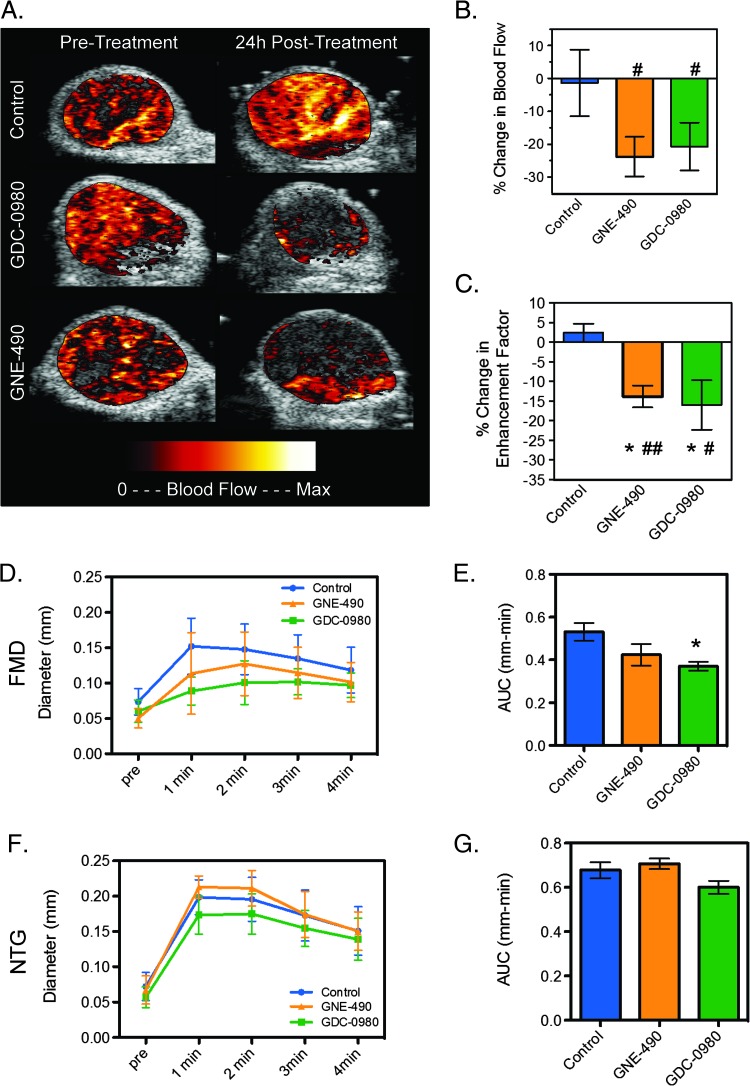Figure 11.
GNE-490 is sufficient for reducing tumor perfusion assessed by DCE-U/S, whereas GDC-0980 suppresses hypoxia-induced FMD in normal vasculature. DCE-U/S: A–C. (A) Representative false-colorized DCE-U/S blood flow maps overlaid onto their anatomic images pretreatment or 24 hours post-treatment with MCT vehicle (control, n = 8), GNE-490 (30 mg/kg, n = 7), or GDC-0980 (10 mg/kg, n = 8). (B and C) Mean percent change ± SEM in DCE-U/S-derived (B) blood flow in the enhancing tumor regions and (C) enhancement factor for the mice described in A. FMD and NTG experiments: D-G. (D) Mean diameter of the FA before and following a transient (4-minute) occlusion of blood flow to the right leg 4 hours post-treatment with 30 mg/kg GNE-490, 10 mg/kg GDC-0980, or MCT (control) ± SEM (n = 9/group). (E) Area under the curve for the plots in D (mean ± SEM). (F) Mean diameter of the FA of the left leg before and following NTG-mediated dilation 4 hours post-treatment with 30 mg/kg GNE-490, 10 mg/kg GDC-0980, or MCT (control) ± SEM (n = 9/group). (G) Area under the curve for the plots in E (mean ± SEM). *P < .05 compared to control using Dunnett's method; #P < .05, ##P < .01 versus pre-treatment by paired t test.

